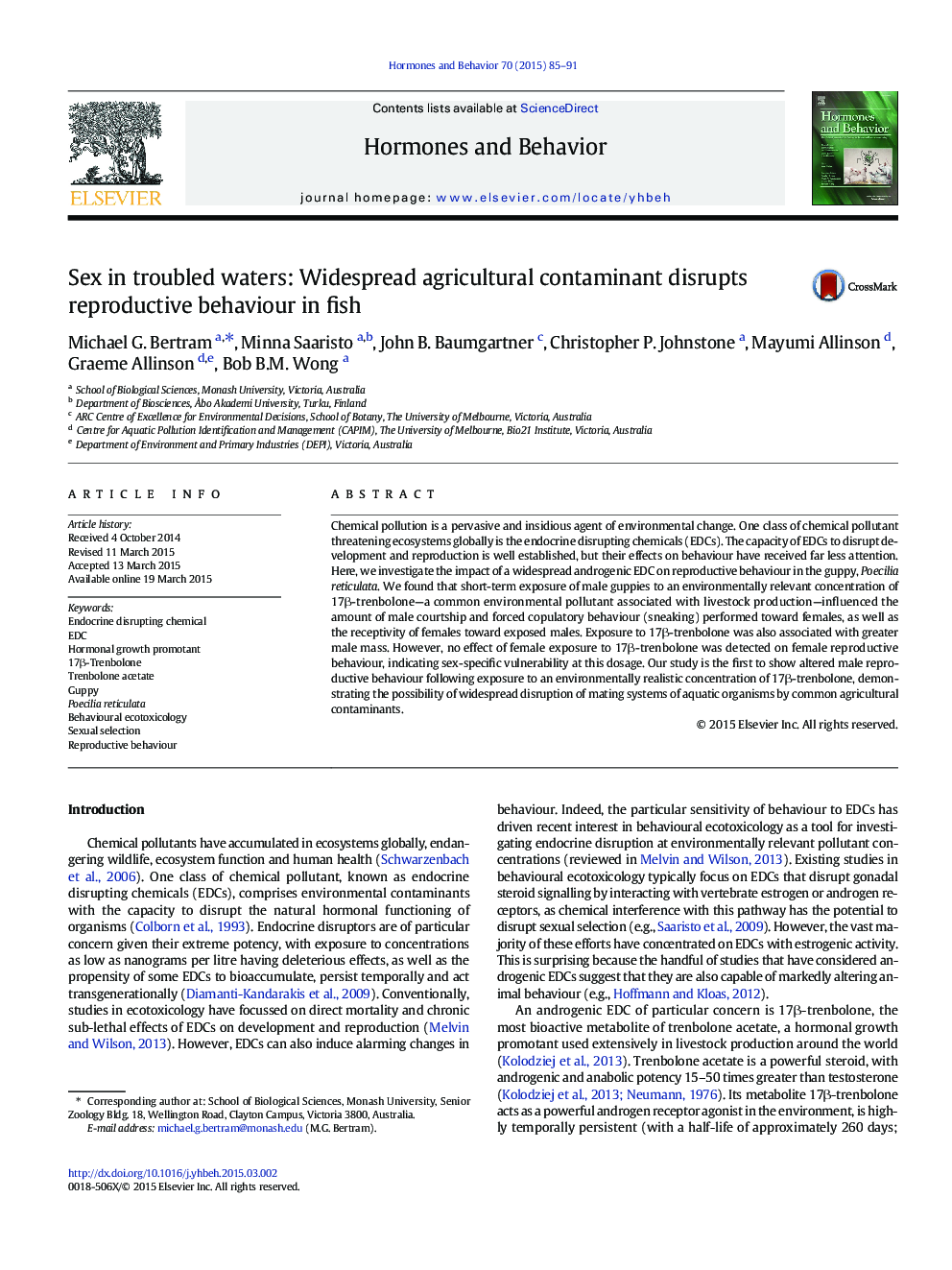| Article ID | Journal | Published Year | Pages | File Type |
|---|---|---|---|---|
| 6795059 | Hormones and Behavior | 2015 | 7 Pages |
Abstract
Chemical pollution is a pervasive and insidious agent of environmental change. One class of chemical pollutant threatening ecosystems globally is the endocrine disrupting chemicals (EDCs). The capacity of EDCs to disrupt development and reproduction is well established, but their effects on behaviour have received far less attention. Here, we investigate the impact of a widespread androgenic EDC on reproductive behaviour in the guppy, Poecilia reticulata. We found that short-term exposure of male guppies to an environmentally relevant concentration of 17β-trenbolone-a common environmental pollutant associated with livestock production-influenced the amount of male courtship and forced copulatory behaviour (sneaking) performed toward females, as well as the receptivity of females toward exposed males. Exposure to 17β-trenbolone was also associated with greater male mass. However, no effect of female exposure to 17β-trenbolone was detected on female reproductive behaviour, indicating sex-specific vulnerability at this dosage. Our study is the first to show altered male reproductive behaviour following exposure to an environmentally realistic concentration of 17β-trenbolone, demonstrating the possibility of widespread disruption of mating systems of aquatic organisms by common agricultural contaminants.
Keywords
Related Topics
Life Sciences
Biochemistry, Genetics and Molecular Biology
Endocrinology
Authors
Michael G. Bertram, Minna Saaristo, John B. Baumgartner, Christopher P. Johnstone, Mayumi Allinson, Graeme Allinson, Bob B.M. Wong,
